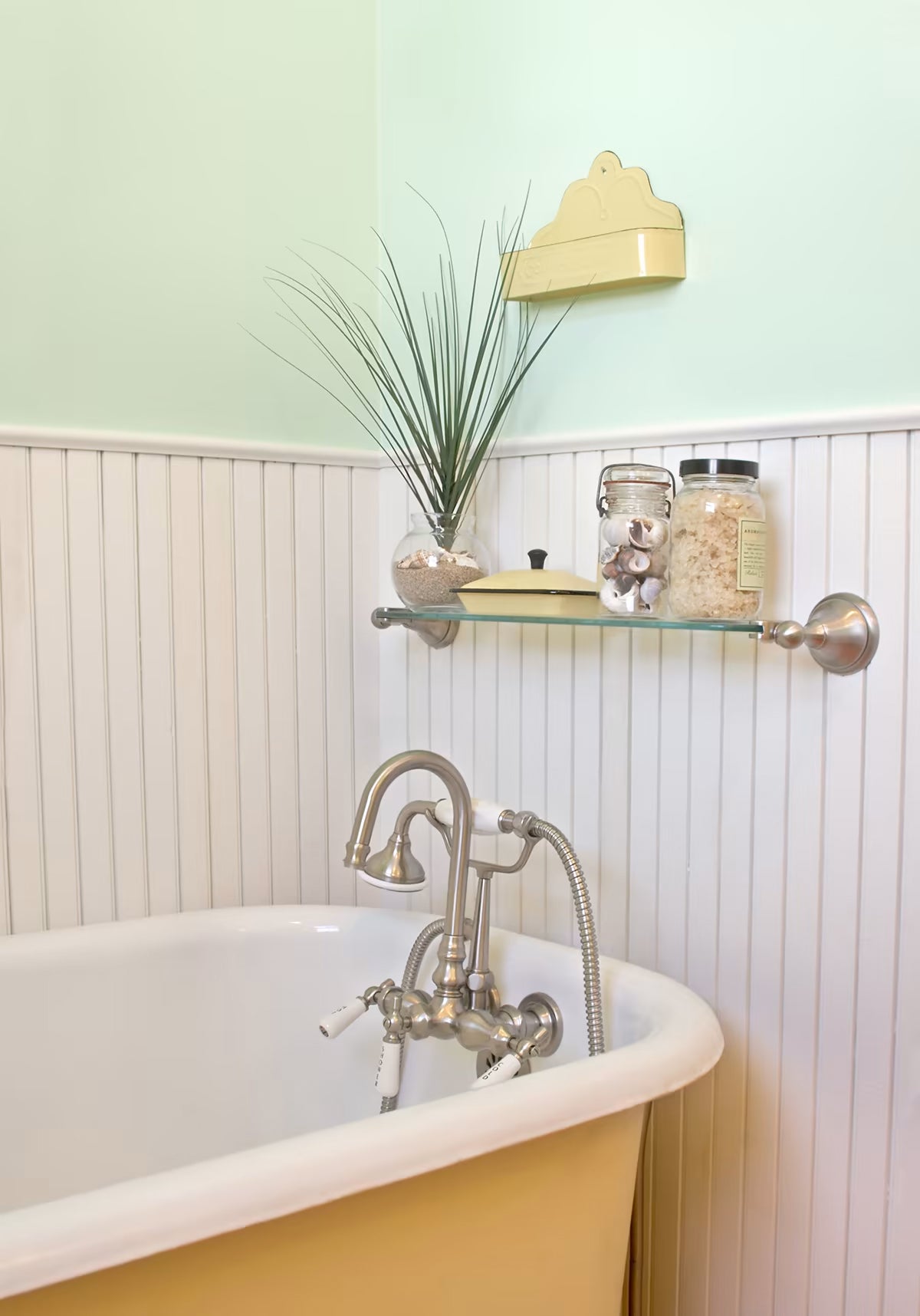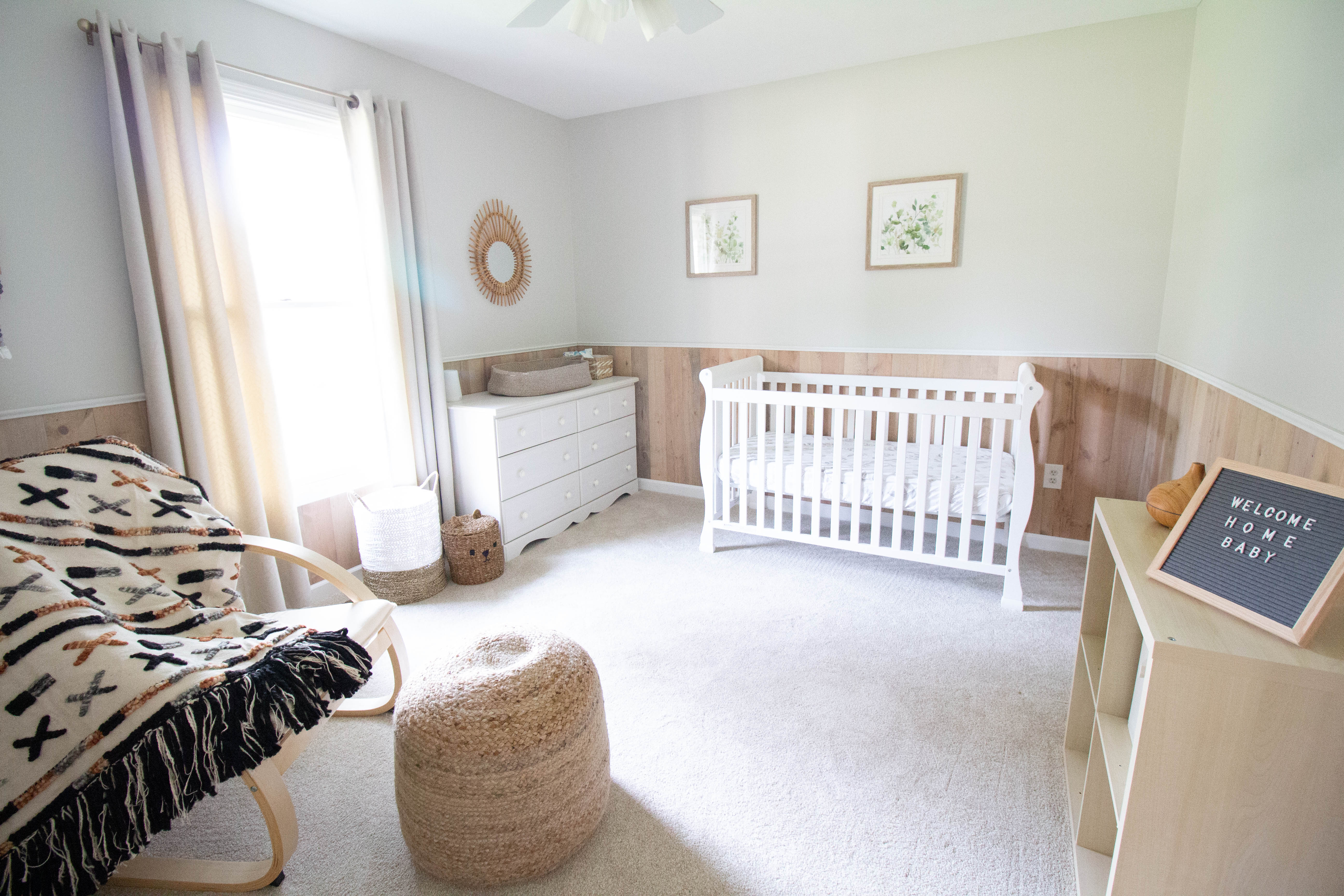
Designer Spotlight: Stephanie Pohlman Designs
Thinking about giving your walls a fresh, stylish update? Instead of covering the entire wall with paint or wallpaper, paneling is an excellent way to add texture, depth, and personality to your space. But with so many options—wainscoting, beadboard, board and batten, and more—how do you choose the right one?
This guide breaks down the most popular paneling styles to help you decide which suits your home best.

Pictured: Reclaimed Weathered Wood White
This article explains several paneling options, including wainscoting and beadboard. We look at what makes each type of panel an attractive choice and compare wainscoting to beadboard.
Wainscoting is a type of wall paneling that typically covers the lower portion of a wall, adding architectural detail and protection. It’s commonly used in dining rooms, living rooms, and hallways to create a sophisticated, traditional aesthetic.
Materials used for wainscoting include:
Wainscoting can be customized with different panel styles, ranging from raised to flat panels. Vertical wood plank wainscoting can be achieved with Stikwood’s peel and stick reclaimed wood planks for an easy, DIY project.
Though it’s often called wainscoting, beadboard is actually its own type of wall paneling. Wainscoting is a general term for wall paneling, while beadboard is a specific style that uses vertical panels. With wainscoting, you can separate the boards using decorative elements or by using frames around panels.

Beadboard differs because you get vertical grooves and small ridges between each board. This combination creates the beaded effect that gives the paneling its name. With beadboard, you lay a row of narrow, vertical planks on your wall. Like wainscoting, installing beadboard is easy as long as you have some nails and glue.
Many modern versions of beadboard come in a single long panel with multiple ridges rather than as separate panels you need to line up.
With board and batten panels, you get a thin strip of wood molding, called a “batten,” to place over each panel board seam. This technique creates stronger vertical lines, adding shadows and texture to a wall.

Though it’s usually used as a type of exterior siding, some people enjoy the pronounced look that board and batten provides so much that they use it internally. The interesting shadows this paneling creates can lend a unique look to your walls. Board and batten can cover the entire height of a wall.

Pictured: Sand Stone
Traditional wainscoting installs will have the top trimmed out with a “Chair Rail”. This horizontal trim board adds a nice finish detail, and is in fact typically the height of a chair-back so it adds beauty and even more protection for the wall.
If you have a raw edge on the top or bottom of your Stikwood, you can also use the Stikwood trim (in wood or metal).
With the three main paneling types explained, it’s time to dive deeper into all your options. There are four more things you might want to think about for your interior design project besides the three we've already talked about.
Let’s look at the pros and cons of each.
Now that you understand what wainscoting is, you’re probably wondering if it’s worth your investment. Here are the pros and cons of this type of paneling:
PROS:
CONS:
Beadboard offers a fresh twist on the traditional favorite, and here’s the gist:
PROS:
CONS:
A tongue-and-groove click paneling system allows you to slot multiple panels together quickly. The smaller nature of these panels makes tongue and groove an excellent choice if you want to create customized designs to fit on your wall.
PROS:
CONS:
Shiplap is a type of horizontal wooden board that’s usually used when building sheds and barns. These boards have grooves cut into the top and bottom, making them relatively simple to install on your walls. Alternatively, Stikwood offers a range of shiplap boards, which you can peel and stick to your walls for a simple installation.
If you’re considering going down that route, there are several pros and cons.
PROS:
CONS:
Though traditionally used for exterior walls, there are several pros and cons related to installing board and batten panels on an interior wall.
PROS:
CONS:
Raised panels are a type of wainscoting that uses panels to create a picture-frame look in your home.
PROS:
CONS:
Many manufacturers refer to flat panels as recessed panels. Though they offer a similar picture-frame look to raised panels, the big difference between them is that these panels feature a raised edge.
PROS:
CONS:
The big difference between wainscoting and beadboard lies in their aesthetic and size variations.
Wainscoting is often the best choice for those who want to achieve a traditional look. The picture frame aesthetic is big and bold, ensuring these panels stand out from the rest of your wall.
With its vertical placement, beadboard may be a better choice for those who want a more modern look. The bold vertical lines add depth and incorporate raised bead spaces. They also look good with wallpapered walls and make an interesting contrast with plasterboard walls.
Do you want a subtle look or an intense look?
That’s the central question when choosing between wainscoting and board and batten panels.
Board and batten paneling gives a room a strong look that was popular in the early 1900s. The battens cover the seams between the panels and stick out, giving the building a strong look. However, it’s fair to say that this look isn’t the trendiest. You may find it challenging to sell your home if a potential buyer doesn’t enjoy the powerful aesthetic that board and batten presents.
Wainscoting is a more subtle form of wood paneling, which may be why it’s been popular for over a century. Also, the fact that it's easy to put up and take down gives you flexibility that you don't get with board and batten.
Lower parts of walls can also be covered with wainscoting, while board and batten is often used to cover the whole wall.
The advantages and drawbacks of board and batten in the wainscoting comparison also apply when comparing it to beadboard. Again, it’s a choice between power and subtlety. The big and bold panels used for board and batten can cover an entire wall. While this gives them a powerful look, that power may be off-putting to some.
Beadboard’s sleek vertical lines offer a more modern aesthetic. Like wainscoting, beadboard is easier to install and remove than board and batten panels.
Wainscoting tends to use large picture-frame panels, creating an airy look. Large frames separate these panels, which are typically long rectangles placed horizontally.
Beadboard panels are placed vertically and have a tighter fit than wainscoting. They’re far less traditional in style, though the smaller panels offer more opportunities for customization.
Placement also affects appearance. Wainscoting is usually placed along a wall’s base, covering the lower three or four feet. While you can use the same placement for beadboard, and many do, you have more options with these types of panels.
Traditional wainscoting is made using wood, making it susceptible to rot and warping if untreated. However, there are versions of wainscoting made using MDF and PVC that are easier to maintain.
Most modern beadboard is made with MDF, which is a combination of wood and resin that gives the boards a rustic look and keeps them safe from water.
There can be vast cost differences between wainscoting and beadboard.
Wainscoting made using MDF, plywood, or PVC can cost as little as $1 per square foot. However, opting for solid wood wainscoting can cause these costs to rocket up to $40 per square foot.
Beadboard is a much less expensive option. Wooden beadboard panels tend to cost $1 per square foot, with the prices for wood imitation panels ranging between $0.50 and $0.75 per square foot.
When it comes to creating a beautiful wainscoting wall without the hassle of traditional installation, Stikwood is the ultimate solution. With its peel-and-stick real wood planks, Stikwood eliminates the need for nails, glue, and special tools—making it an effortless DIY project. Whether you're looking to add warmth with reclaimed wood or achieve a sleek, modern aesthetic, Stikwood offers a variety of finishes to match your style. Plus, its lightweight design and strong adhesive backing ensure a secure and lasting transformation. If you're seeking a quick, stylish, and stress-free way to enhance your space, Stikwood is the easiest and most effective choice for wainscoting.

Join our newsletter to stay informed with new product releases, designer spotlights and promotions.
Your cart is currently empty.
Start Shopping